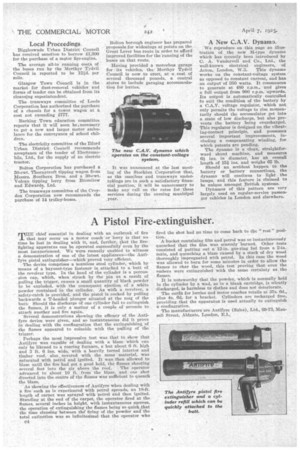A New C.A.V. Dynamo.
Page 8

If you've noticed an error in this article please click here to report it so we can fix it.
We reproduce on this page an illustration of the new Id-type dynamo which has rcceptly been introduced by C. A. Vandervell and Co., Ltd., the well-known electrical engineers, of Acton, London, W.3. This dynamo works on the constant-voltage system as opposed to constant current, and has an output of 350 watts. It commences to generate at 480 r.p.m., and gives a full output from 900 r.p.m. upwards. Its output is automatically controlled to suit the condition of the battery by a C.A.V. voltage regulator, which not only permits the voltage to rise momentarily should the accumulator get into a state of low discharge, but also prevents the battery being overcharged. Thisregulator is designed on the vibrating-contact principle, and possesses several important improvements, including a compensating winding, for which patents are pending.
The dynamo is a clean, straightforward shunt machine, and measures fel ins, in diameter, has an overall length of 15i ins, and weighs 65 lb.
Should an accident happen to the battery or battery connections, the dynamo will continue to light the lamps, and this feature is claimed to be unique amongst British systems. Dynamos of this pattern are very largely used on regular-service passenger vehicles in London and elsewhere.




























